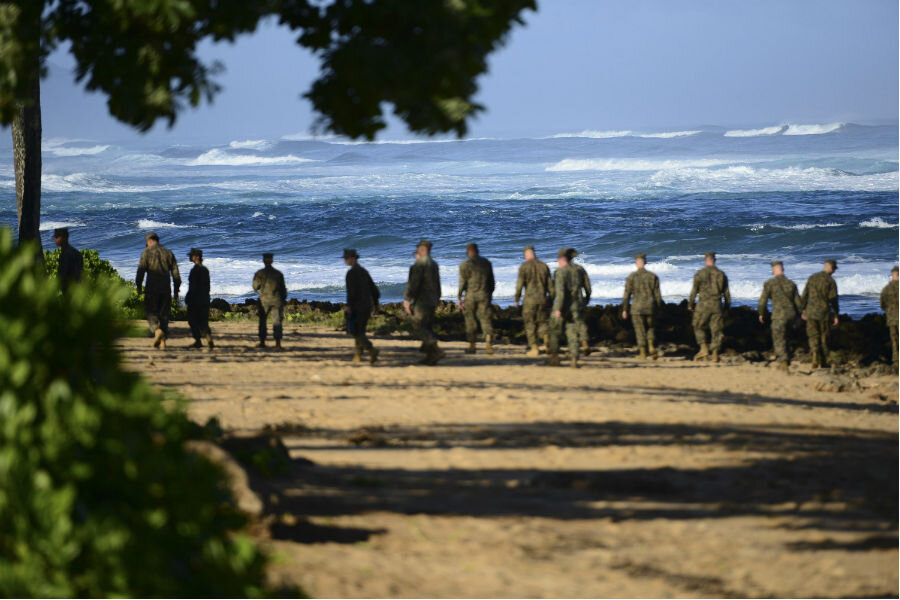Coast Guard suspends search for missing Marines off Hawaii
Loading...
At sunset on Tuesday evening, the US Coast Guard officially suspended its search for the 12 missing Marines who went down aboard two helicopters off the coast of Hawaii last Thursday while on a training mission.
No survivors nor bodies have been reported found. Going forward, the Marine Corps will be responsible for "recovery and salvage" efforts.
“The decision to suspend this search without finding survivors is particularly difficult,” Capt. Jim Jenkins, acting commander of Coast Guard District 14, said during a press conference late Tuesday. “We will continue to provide any comfort we can from this terrible loss.”
The Marine Corps notified the Coast Guard that two CH-53 helicopters, carrying six men each, were missing and asked for assistance at 11:30 last Thursday night. By midnight, the Coast Guard had joined a search alongside the Navy, the National Guard, and Hawaii fire, police, and Ocean Safety. A witness last Thursday saw a fireball in midair; another reported seeing a flare, CNN reports.
Since Friday, a total of 130 rescue personnel had covered 40,530 nautical square miles, an area about the size of Florida, over the course of a 115-hour search effort, the Coast Guard said. Some of the territory rescuers covered was of previously searched areas off the north shore of Oahu, Chief Petty Officer Sara Mooer said in an interview with The New York Times. Marines also combed the beaches on foot while others searched from personal watercraft.
The 12 Marines and the two helicopters were on a local training mission deployed from Marine Corps Base Hawaii when they all appeared to go down. No mayday call was received, just notification that something had gone wrong, the Coast Guard said.
Searchers have located a fire and debris field, including an empty life raft, about two and a half miles north of Haleiwa Beach and later found floating pieces of debris consistent with military aircraft.
A Coast Guard spokesman, Lt. Scott Carr, said Tuesday that four of the helicopters’ life rafts had been recovered.
"There is no indication from the sightings that any survivors have been aboard any of the life rafts," the Coast Guard said after four days of searching.
The helicopters that went down are known as Super Stallions, and are the US military's largest helicopter model, capable of carrying a 26,000-pound armored vehicle, 16 tons of cargo, or a team of combat-ready Marines, according to a Marine Corps website.
The Coast Guard initially said that the aircraft had collided, but the Marines said later it wasn't yet known if there was a collision. The cause remains under investigation, ABC News reports.
Aircrews wear personal flotation devices with their flight suits and are trained in survival and swimming, according to the Marines.
People have been found days or even weeks after getting lost at sea, Chief Mooers said.
Brig. Gen. Russell A. Sanborn, the commanding general of 1st Marine Aircraft Wing, said a memorial for the soldiers was being planned for Friday at the base in Hawaii.






